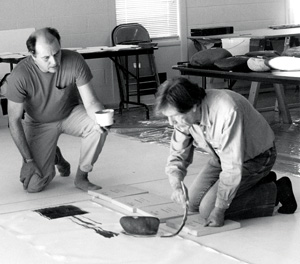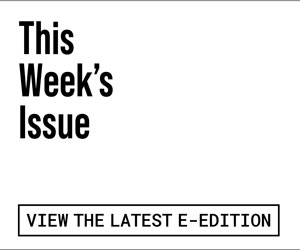
ONE OF THE 20th century’s most influential and controversial American composers, John Cage, needs absolutely no introduction. Which is why a new version of his life story, Begin Again: A Biography of John Cage contains absolutely no introduction.
Instead, biographer Kenneth Silverman unfolds Cage’s existence from 1912 to 1992 just as it was, without putting him into any sort of context—a straight-up and highly readable narrative account. Neither prologue nor epilogue is necessary.
An out-and-out hysterical artist and thinker, Cage was an inspiration for many. In 1939, his live performance work Imaginary Landscape No. 1 included sounds produced by frequency test records on variable-speed phonographs—one of the first pieces of electroacoustic music.
At that time, he also invented the “prepared piano,” with screws, bolts and weather stripping inserted between the strings to create new sounds. Using the ancient I Ching divination system as a compositional tool, he derived notes, dynamics and rhythms from chance operations.
He became one of the West’s primary composer/advocates of Asian philosophies and cultures, including Zen Buddhism. He strove to remove all emotion and purpose from music, to remove the composer’s ego from the work and to liberate all sounds and noises, so the composer was no longer confined to the limitations of conventional musical instruments, the idea being, if we just listened to the sounds of a bus driving by, or static from a radio, a refrigerator, the rain, the wind or the everyday collage of sounds and silence surrounding us, then we wouldn’t need concert halls for anything.
Understandably, his life and art more than offended the traditionalists, especially in music academia. They accused him of flipping the bird at all previous music. The truth was, actually, that he simply believed music didn’t automatically have to be anything.
But Cage impacted much more than just music. His decades-long interaction with the choreographer Merce Cunningham completely changed modern dance forever. His influence on 20th-century sculpture and printmaking is also undeniable.
Silverman’s long-awaited book hit the shelves a few weeks ago, and since I wasn’t paying attention, I had to infiltrate the Asian Art Museum in San Francisco in order to find out. At a recent press opening, I encountered the artist Ray Kass installing some work. We got to talking about Cage because it was at Kass’ own Mountain Lake Workshops that Cage produced his now famous watercolors back in the ’80s. Kass told me about the book. A shot of him and Cage appears on page 372.
With all that said, we now go local. Cage came to San Jose a few times during the ’60s. He later recalled a moment after a lecture he gave at San Jose State College, as it was then called. Cage was a friend and big fan of the futurist Buckminster Fuller, who was temporarily in residence at the college. After Cage’s lecture, in which he mentioned Fuller quite a few times, a student misunderstood and thought Cage was Buckminster Fuller. She called him “Mr. Fuller” after the lecture. Cage said he enjoyed the freedom of not being known in San Jose. Silverman devotes one measly sentence to the incident.
In January 1992, an entire week’s worth of events went down at Stanford University to celebrate Cage’s upcoming 80th birthday later that year. I remember when the events happened, as I was just beginning to study Cage at that time, but I didn’t attend. Cage did, however, and gave a lecture titled “Art and Overpopulation.”
A s Silverman tells it: “One student asked him how to deal with people’s destructiveness. Cage urged the young man to always be positive. For himself, he added, ‘I don’t have to worry because I won’t live much longer.'” Sadly, he didn’t. Cage died later that year, just a few weeks short of his 80th birthday. Man, I wish I had showed up.
Begin Again: A Biography of John Cage
By Kenneth Silverman
Knopf; 496 pages; $40 hardback



